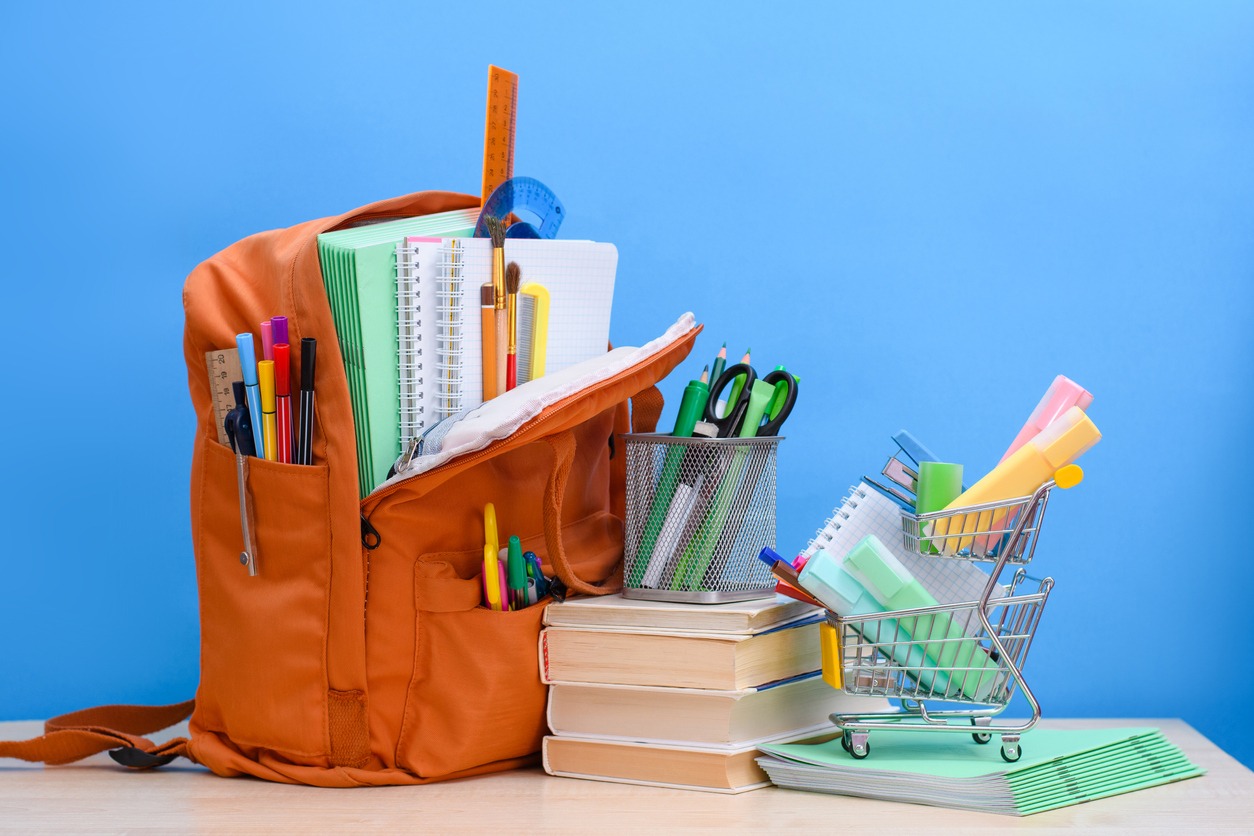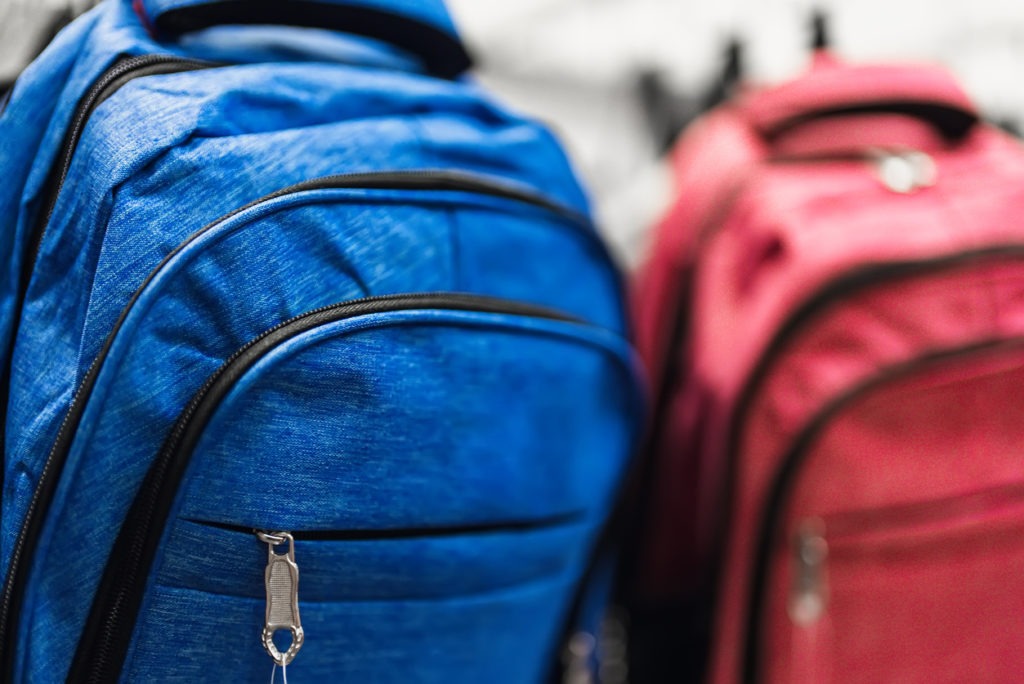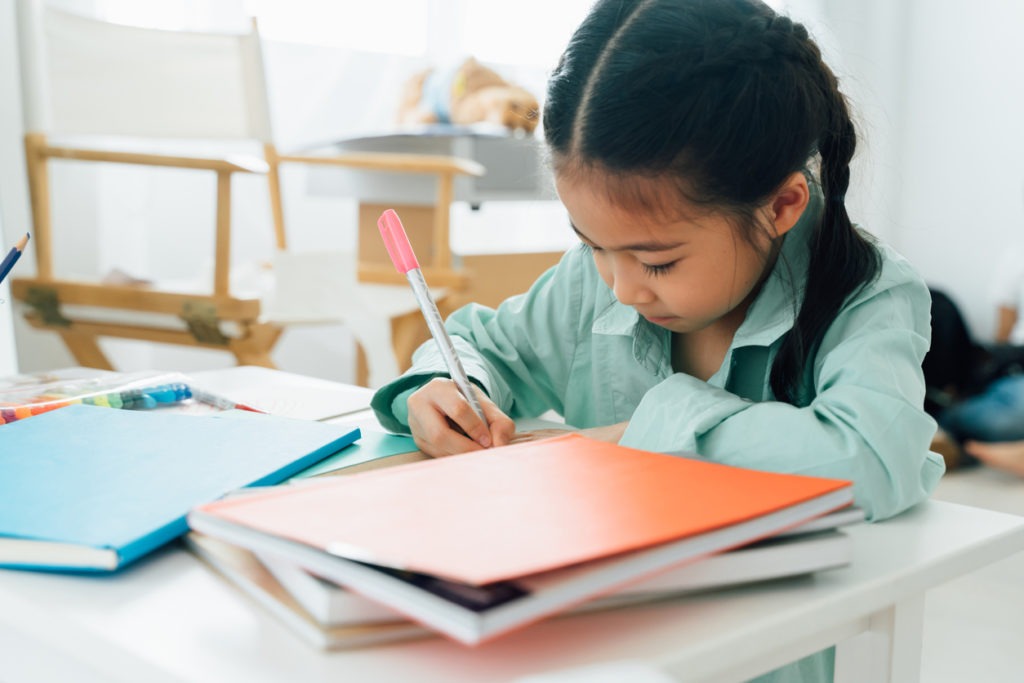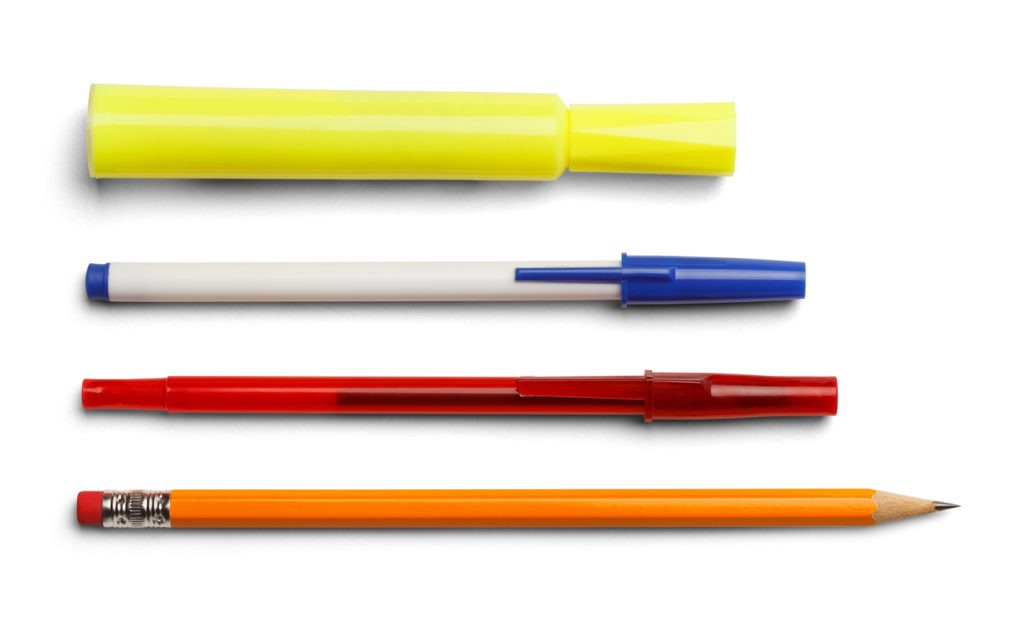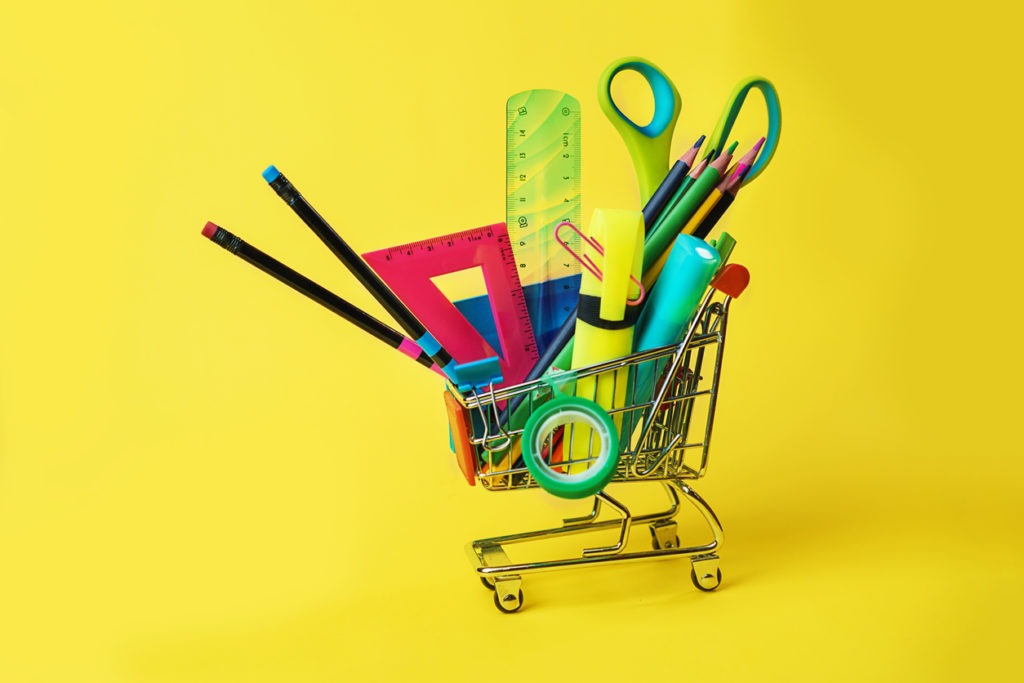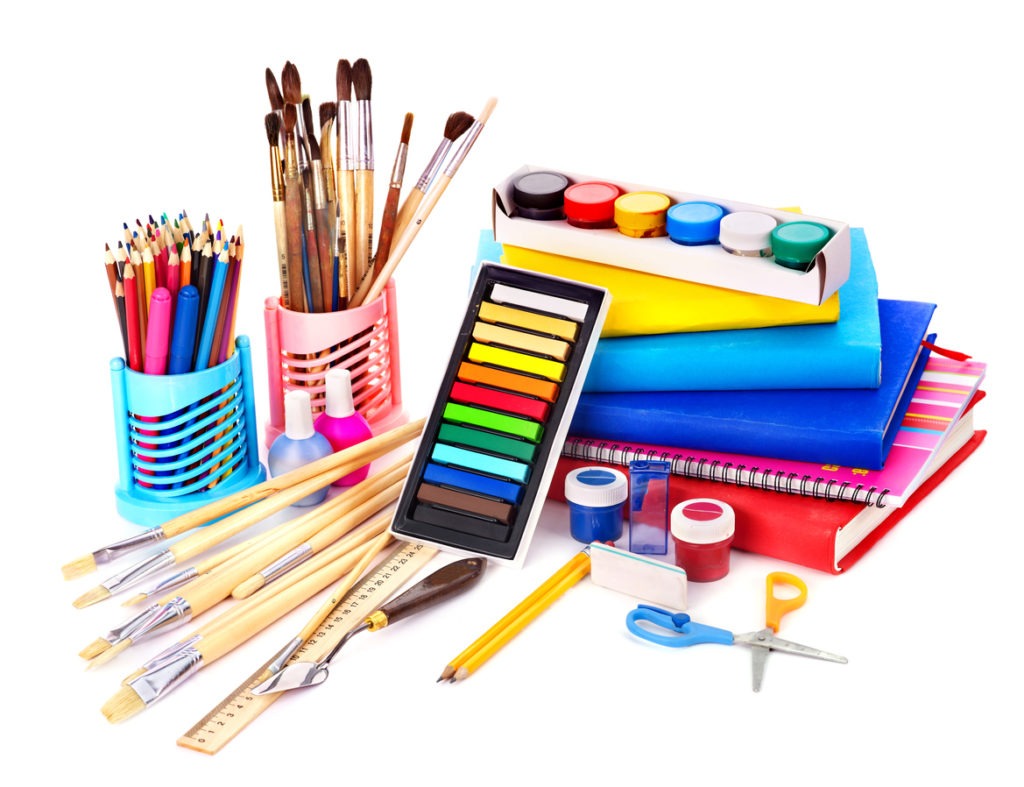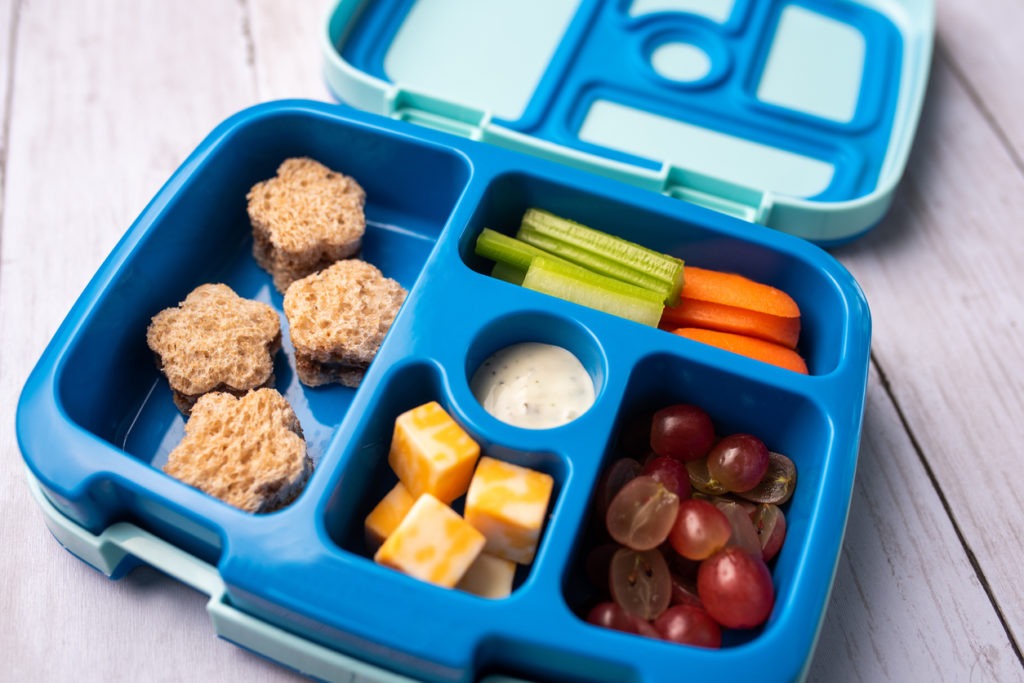The back-to-school season means we should start preparing our kids for an enjoyable and successful academic year. This is why the stores are filled with school supplies of all kinds once the first day of school comes near.
Back-to-school shopping is an exciting summer activity as you prepare for your kid’s vacation days to be over. But sometimes, it can feel like a chore. Every parent attests that back-to-school shopping can be fun but tiresome. It can overwhelm parents financially, emotionally, and organizationally. Deciding what and what not to buy can be overwhelming, too. Here’s a list of essential back-to-school materials for your kids:
Backpack
First things first: a bag to put everything in. Your child can use any school bag that can fit all essentials, but backpacks are recommended for many reasons: they are spacious, often designed to handle a bit of weight, and can balance the weight of your child’s stuff in two shoulders. A body or shoulder bag might be more appropriate for students who don’t need to bring a lot to their classes.
There are several sizes, styles, and designs of backpacks out there. Your child might be able to use a hand-me-down from an elder sibling or the backpack they used last year. However, an upgrade is always appreciated at the beginning of the school year.
When purchasing a backpack for school, make sure its structure supports your child’s back. Padded and adjustable straps will take some of the stress off their neck, back, and arms. Plus, ensure your kid doesn’t overburden themselves with a too-heavy backpack. Whether it’s for a hiking trip or the daily school grind, a backpack shouldn’t compromise the wearer’s posture.
The right backpack will also give your kid a lot of space and compartments for proper organization. Going for backpacks with many different compartments and pockets is recommended over using a backpack with one big compartment.
Paper products
Your child would surely need notebooks and pads for school. While we are in a digital world, schools still require paper so that children would still learn how to write and draw using their hands. Your child would either need wide-ruled notebooks, spiral notebooks, loose-leaf paper, and pad paper.
Your child may also want to have a personal organizer or planner notebook beside the notebooks they would need for taking down notes for their subjects. They can use the planner or organizer notebook to remind themselves of their assignments, projects, and homework so they won’t miss any deadlines. They can also use this to track school events and note what they need to do, buy, or prepare for that event.
Besides these, you may also need to keep a stock of copy paper for projects, homework that needs to be printed out, and some graphing paper for math classes. Before buying these things, always ask the school first. Some schools provide their own notebooks for their students, and some have color requirements for different subjects.
Writing materials
Writing materials are necessary for students to take notes, take quizzes and exams, and many more. It’s one of the most important things to bring to school. Make sure to have enough stocks since pens are prone to get lost or misplaced. Depending on the grade level, your child would need the following:
- No. 2 pencils – Young school children need pencils for writing at school.
- Black or blue ballpoint pens – Starting from grade 4 to college, your child would need a ballpoint pen for writing.
- Gel pens (this one is more of a preference for students)
- Markers – Depending on the grade level, your child would need washable and/or permanent markers.
- Highlighters – Though it’s technically not writing material, highlighters are a great study aid for highlighting essential portions of text in their books or making notes a little more organized.
Essentials
Besides pen and paper, your child will need these items:
- Folder (paper and plastic) – Folders can be used to organize or make any project or homework more presentable. Sometimes, teachers would require students to use a certain kind of folder in a specific color.
- Envelopes (paper and plastic) – This is great for storing papers and for organizing documents. Also, some homework and projects are needed to be passed inside an envelope.
- Calculator – Grade schoolers from grades 4-6 might need a standard calculator, but middle school and high school students would need a scientific or graphing calculator.
- Pencil case – To keep your pens and pencils organized, keep them inside a pencil case or pencil pouch.
- Pencil sharpeners – You may want to keep a mechanical, tabletop pencil sharpener at home and a more portable pencil sharpener to bring at school in a pencil case.
- Erasers – This one’s a small, regularly overlooked essential. Erasers and pens, pencils, and other writing tools are a must-have.
- Scissors – Whether you need them for arts or not, chances are your kid would need to cut something using a scissor.
- Tape – Scotch tape is typically needed for school, but for some subjects, you may also need paper, double-sided, masking, or duct tape.
- Glue or glue sticks – Glue is essential for an art class or art activities, but you will never know when it can be handy. It’s best to keep a small bottle of glue or glue sticks on your child’s pencil case just in case the need to glue something arises.
- Rulers and protractors – A straight, 12” ruler is useful for many things, but different types of rulers and protractors can be handy for geometry class.
- Clips and staplers – Binder clips, paper clips and staplers are handy for binding paper and documents together.
- Labels – Adding your child’s name as a label in each of their notebooks, folders, pens, and other school supplies will be a lifesaver.
Organizers
Even if your school-age kid is quite young, they’d need some sort of folders and/or binders to organize their things. There are separate worksheets and printables for different subjects, and organizers can help prevent them from being mixed up and hard to find. There are expanding file folders, binders, organizing envelopes or clear books that your child can bring to school, and some file organizer storage for their study desk.
Art Materials
Depending on your child’s grade level, the types of art materials required will vary. Preschool and grade school children are more likely to need art supplies than high school or college students. But it will surely depend on your children’s classes – if there’s art in the curriculum, you will probably need to buy some of these:
- Crayons
- Colored pencils
- Pencil set for sketching/drawing
- Oil pastels
- Watercolor
- Paintbrushes
- Colored papers
- Specialty papers
- Colorful markers
- Sketch pad
- Canvas
- Scrapbooking materials
Most parents and students only buy some art materials at the time when it’s required for an art subject. It makes sense, rather than buying them beforehand and ending up getting unused because it’s not needed for school.
Lunch Items
While at school, you must ensure that your child is eating healthily and sufficiently. Whether school lunches are available or not, many parents give their kids healthy homemade lunches for most of the school year. This might be more for the younger kids, especially if we want to stay safe and provide bite-sized pieces of food. Here are the essential accessories for lunch (and snacks):
- Lunch bag or lunchbox – A good one will either fit into the kid’s backpack or have a handle or strap for carrying. Ideally, a lunchbox for your kids should be waterproof, leak-proof, and with insulation to keep the food’s temperature.
- Lunch containers – Bento boxes are now a hot favorite among concerned parents, mainly because of the convenient compartments and food-grade materials. But you can use classic lunch boxes with few or no compartments, depending on the kind of food you want to put in them. There are also salad bowls with lids and compartments trays for salad ingredients, which are perfect for ensuring your child will be eating fresh and healthy foods at school.
- Reusable water bottle – Encourage the habit of drinking water with your kids. They can take a sip anytime with a proper reusable bottle without looking around for a water fountain. As much as possible, go for insulated water bottles that can maintain the water temperature. At least choose BPA-free if you’re going for a plastic water bottle.
- Sandwich bags and Ziploc bags – These help store snacks and sandwiches.
Personal items
These items will vary from child to child. Students may want to have their own personal hygiene products, such as:
- Tissues
- Hand sanitizer
- Wet wipes
- Tampons or pads (if your child started menstruating, it helps always to keep a couple of extra in her bag)
- Change of underwear (in case of accidents or if period comes along unexpectedly)
- Powder (for freshening up)
- Cologne
- Ponytail and/or hair clips
Electronics

Smartphones and other electronic devices like laptops and tablet computers are both used and misused in schools. Schools often limit the use of these personal items so as not to hinder learning.
Some classrooms, especially in the upper grades of private schools and well-funded public schools, are fully stocked with computers for student use. Some encourage or require students to bring their own laptops, mobile phone, or iPad, while others provide them to students.
While schools do not always require these devices, most tweens and teens already have them, especially cell phones. Access to devices and the Internet is necessary, especially for doing research or class work at home.
